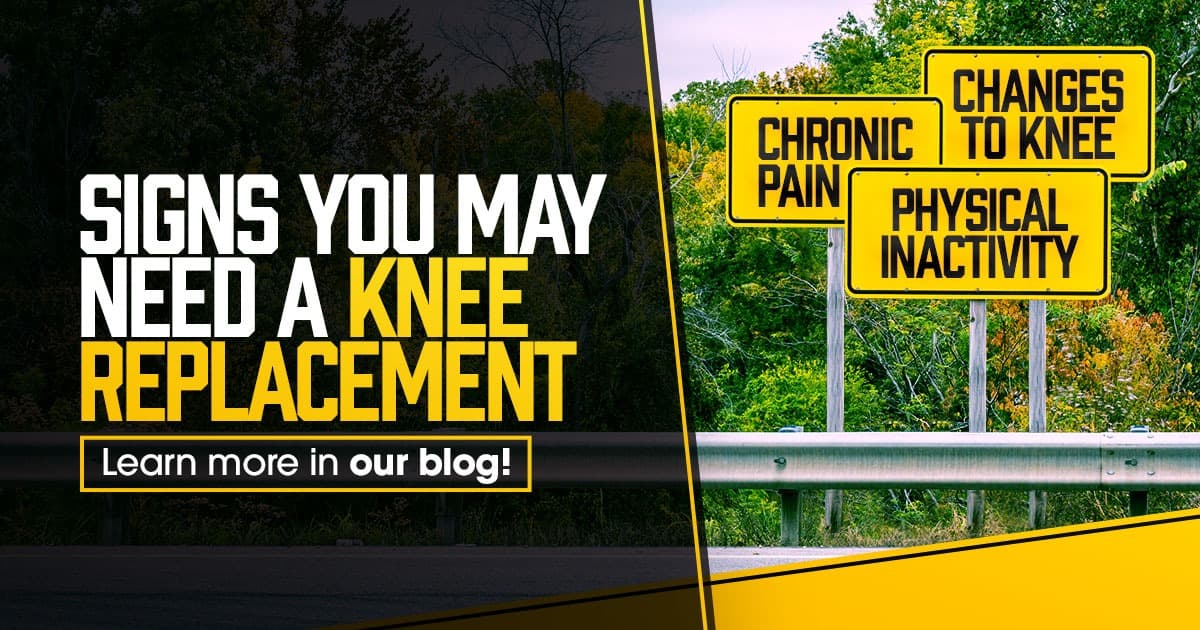Osteoarthritis (OA) is a degenerative type of arthritis and is the most common form found in the knee. OA of the knee can affect your every move. Knee replacement surgery (knee arthroplasty) can help relieve pain and restore function when all other OA treatments have failed. Surgery is a big step. However, if you know the signs to look for, it can help you decide if you may need a knee replacement or not.
Sign 1: Constant Pain
In OA of the knee, the cartilage in the knee joint gradually wears away over a long time. The cartilage becomes frayed and rough, decreasing the protective space between the bones. As a result, bone rubs on bone and produces painful bone spurs. Severe knee pain or stiffness that limits everyday activities, including:
- Walking
- Climbing stairs
- Getting in and out of chairs

Walking more than a few blocks without significant pain becomes increasingly difficult. It may be necessary to use a cane or walker. You experience moderate or severe knee pain and inflammation day or night, even at rest.
Sign 2: Other Failed Treatments
In most cases, providers will try other less invasive ways to treat your pain before considering replacement surgery. These recommendations include:
- Prescription and over the counter options:
- Ibuprofen and acetaminophen
- Prescription creams and ointments that you rub onto the skin to ease discomfort
- Injectable treatments that can ease pain and help the joint move more smoothly temporarily:
- Corticosteroid injections
- Hyaluronic acid shots
- Arthroscopic surgery is a procedure that uses a small incision to remove damaged cartilage. The surgeon then flushes out any remaining loose bone or cartilage. This minimally evasive procedure takes a few days to recover and provides short-term pain relief.
If you are overweight, your provider may also ask you to take steps at home, such as exercise and physical therapy. Losing extra weight and strengthening the muscles surrounding the knees can help relieve a lot of the extra pressure on aching knee joints. Failure to substantially improve after trying other available treatments is a good indication you may need a knee replacement.
Sign 3: Knee Deformity

You may notice a bowing in or out of your legs and decreased range of motion, making it next to impossible to straighten or bend the knees fully. This is a sign that your knee OA has progressed significantly enough to require joint replacement surgery.
Are You a Candidate for a Total Knee Replacement?

Total knee replacement surgery can restore your range of motion, realign the joints, and lasting pain relief. If you’ve been told you’re a candidate for a total knee replacement or have OA of the knee, clinical research studies may be an option. Contact Endeavor Clinical Trials at (210) 949-0807 to explore upcoming total knee replacement studies, or visit our website today!
Sources:
https://orthoinfo.aaos.org/en/treatment/total-knee-replacement/
https://www.webmd.com/osteoarthritis/osteoarthritis-knee-replacement-surgery













